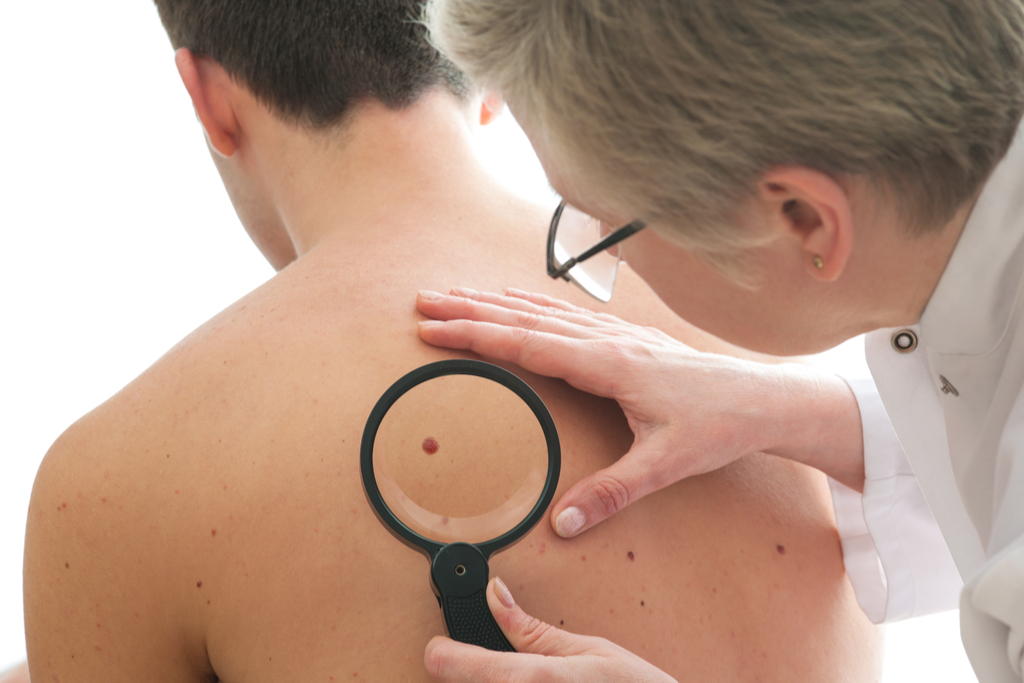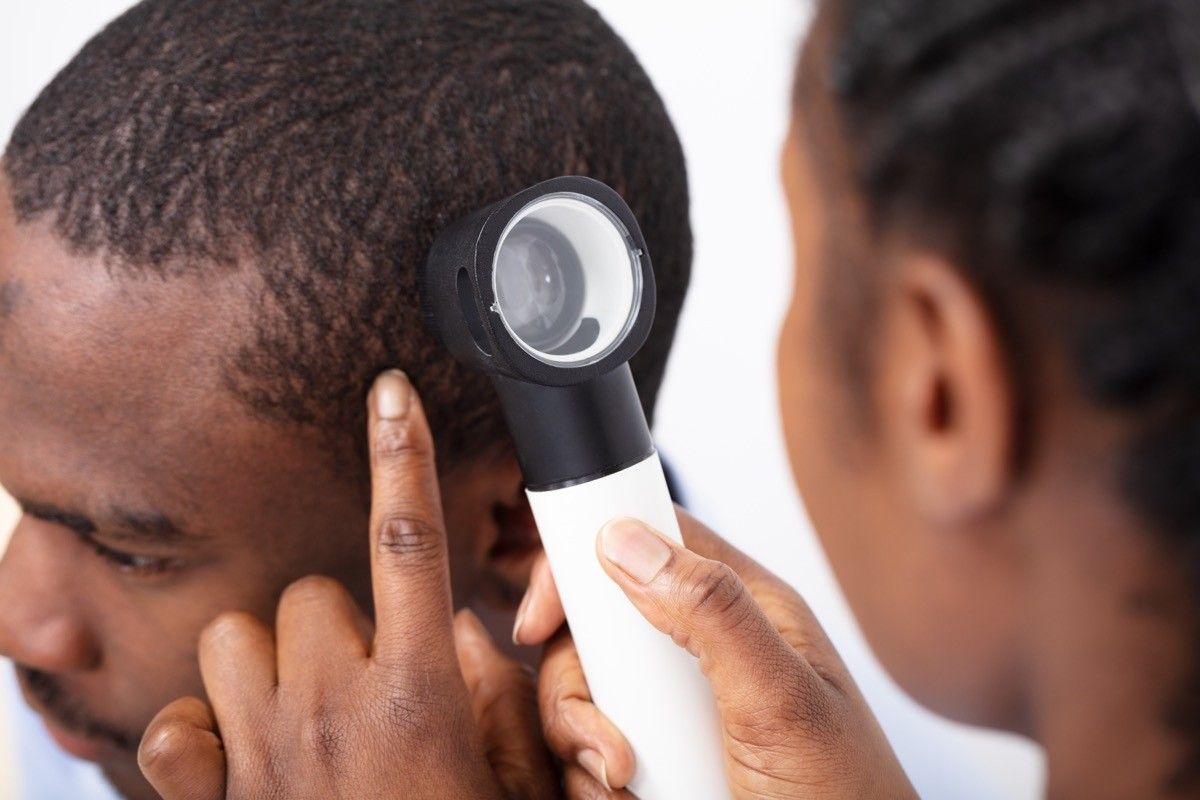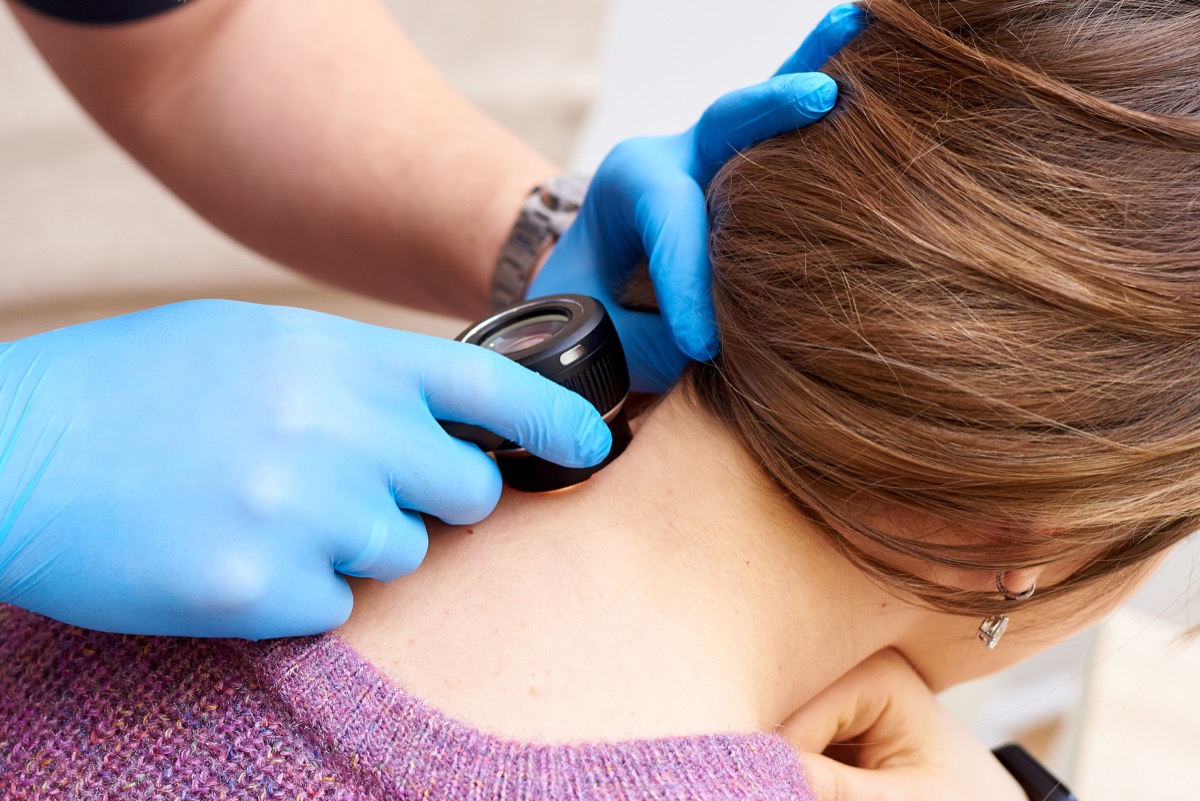Do This Monthly and You May Slash Your Cancer Risk
Every day, roughly 9,500 people in the U.S. are newly diagnosed with skin cancer, says the American Academy of Dermatology Association. While some cases are considered minor and easily treated, others can spread to other parts of the body and are considered life-threatening. Rates of melanoma, generally considered to be the most serious form of skin cancer, have surged in recent decades. In fact, during the 30 year period between 1982 and 2001, the number of melanoma cases doubled, the AADA says. That’s why experts now recommend doing one simple thing once a month to help reduce your risk of a life-threatening case. Read on to learn how to slash your risk at home—and to find out when it’s time to call the doctor.
READ THIS NEXT: If You Notice This on Your Hands, Get Checked for Cancer.

Skin cancer is the most common kind of cancer, and one in five Americans will be diagnosed with a case of it by the age of 70. According to the National Foundation for Cancer Research (NFCR), there are more new cases of skin cancer each year than new cases of breast, prostate, lung, and colon cancers combined.
Basal cell carcinoma, melanoma, squamous cell carcinoma, and Merkel cell carcinoma are the four main types of skin cancer, and each has its own unique symptoms and prognosis. While your dermatologist may be able to treat certain cases with outpatient surgery or medication, others that are more invasive or advanced may require radiation, surgery, immunotherapy drugs, or chemotherapy.
READ THIS NEXT: If This Happens to You in the Bathroom, Get Checked for Cancer, Doctors Warn.

Your apparent risk level may help your doctor determine whether a skin cancer screening is right for you. You may be at heightened risk if you have a history of skin cancer in your family, have multiple atypical moles, or have signs of precancerous moles.
Physical attributes can also play a significant role in one’s odds of developing skin cancer. “People who are at a higher risk of developing skin cancer are typically lighter-skinned and freckled with blond, red, or light brown hair and blue, green, or gray eyes, though skin cancer occurs in all people with all skin tones,” Michi M. Shinohara, MD, a dermatologist at Seattle Cancer Care Alliance (now Fred Hutchinson Cancer Center), tells Best Life.
However, it’s important to follow up on signs of skin cancer regardless of skin tone or eye color. “Everyone needs to know that people of all colors, including those with brown and black skin, can get skin cancer, even if you never sunburn,” Shinohara warns. “When skin cancer develops in people of color, it’s often at a later stage when diagnosed. This can be very dangerous when the person has melanoma, a very quickly spreading skin cancer.”

There’s one simple way to greatly increase your odds of early detection, experts say. “One of the best ways to catch skin cancer early is through self-examination or mole mapping. Yet, people aren’t nearly as regimented examining their skin as they are wearing sunscreen,” says Shinohara.
Since most melanomas can be seen with the naked eye, the dermatologist recommends mole mapping once a month using a paper body chart or mobile app. This should help you record any new or changing mole patterns, as well as freckles and other markings which you deem suspicious. “If you notice any changes to your moles or freckles, or if you have a blemish that simply won’t go away, reach out to your dermatologist,” she says.
Shinohara notes that if you mole map at home, “it’s important to carefully and thoroughly evaluate your skin,” including the bottoms of your feet, groin area, scalp, and back. “For the hard to reach places like your back or scalp, ask someone you trust to help you look for any irregularities,” she advises.
For more health news sent directly to your inbox, sign up for our daily newsletter.

When it comes to skin cancer detection, it’s important to learn the ABCDEs. “When you’re doing a self-examination, look for ‘Asymmetry’ (moles that are unevenly shaped, or the two halves don’t match), irregular ‘Border,’ varied ‘Color’ (including dark, light, or red spots), large ‘Diameter’ (larger than a pencil eraser), and ‘Evolving’ (any changes with time),” Shinohara says.
In addition to using the ABCDE guide, Shinohara recommends looking for “itching, tenderness, or pain in the mole or surrounding skin. Any rapid growth of a mole or spreading color from the edge into nearby tissue are causes for concern,” the dermatologist adds. “If a flat mole suddenly gains height or a surface changes texture, seek medical attention immediately. Additionally, crusty, ulcerated, or bleeding moles indicate advanced disease and require immediate treatment,” she warns.
Speak with your doctor if you are unsure whether a growth or marking meets these specifications, or if you need help learning how to track skin changes.
" Conservative News Daily does not always share or support the views and opinions expressed here; they are just those of the writer."

Now loading...